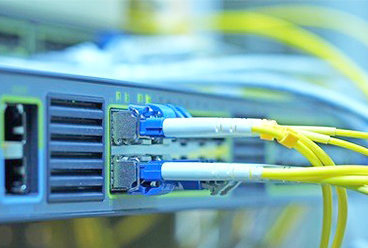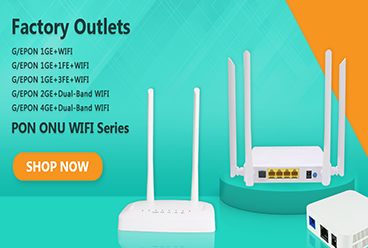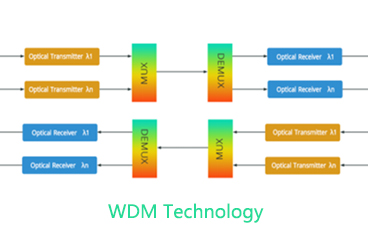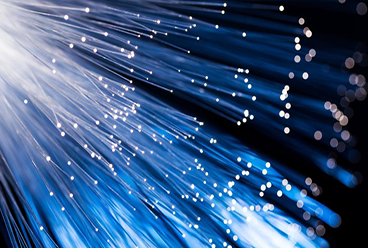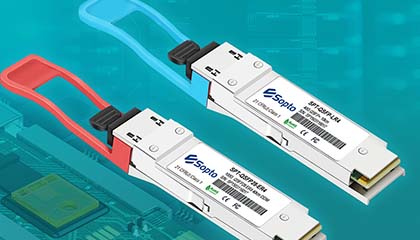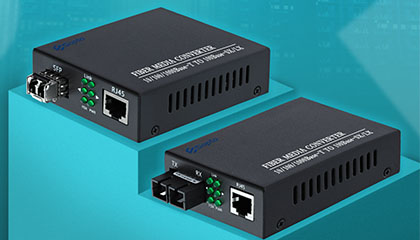Fiber media converter are networking devices used to facilitate the conversion of signals between different types of network media. They serve as a bridge between two dissimilar network segments that use different transmission technologies or physical media. The main purpose of media converters is to extend the reach of network connections beyond the limitations of a single type of network cable or medium.
The typical scenario where media converters are used involves connecting two network devices or segments that have different types of cabling or interface standards. For example:
Copper to Fiber Conversion : Media converters can convert electrical signals transmitted over copper cables (like twisted-pair Ethernet cables, commonly known as Cat5e or Cat6 cables) to optical signals for transmission over fiber optic cables. This allows networks to take advantage of the long-distance capabilities and immunity to electromagnetic interference provided by fiber optics.
Single-mode to Multi-mode Fiber Conversion : In situations where a network is already using single-mode fiber, but the need arises to connect it to a multi-mode fiber segment (or vice versa), a media converter can perform the necessary signal conversion.
Different Data Rates : Media converters can also be used to connect devices with different data rates, for example, converting 1000Mbps Gigabit Ethernet to 100Mbps Fast Ethernet.
Network Protocol Conversion : In some cases, media converters may also perform protocol conversions, such as converting between Ethernet and Asynchronous Transfer Mode (ATM) protocols.
Media converters are typically compact standalone devices with at least two network interfaces – one for each type of media being converted. They require minimal configuration and are often plug-and-play, making them easy to integrate into existing network infrastructures. Media converters play a crucial role in expanding network capabilities and optimizing data transmission in situations where upgrading an entire network infrastructure to a single medium may be costly or impractical. They are commonly used in various industries, including telecommunications, data centers, industrial automation, and enterprise networks.
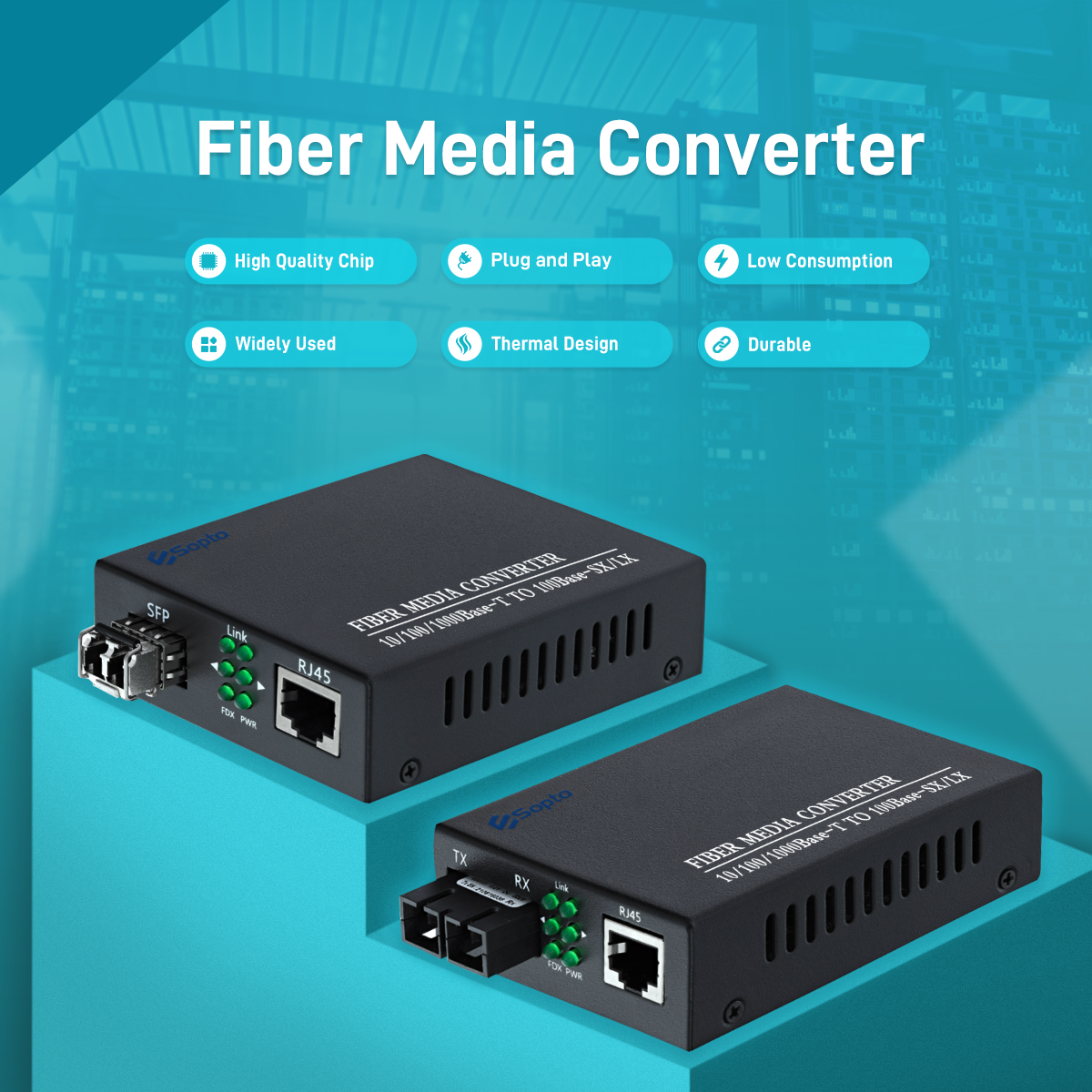
What are the classifications of media converters?
Media converters can be classified based on different criteria, such as the type of media they convert, the data rate they support, and the network protocols they work with. Here are some common classifications of media converters:
Media Type Conversion
Copper to Fiber Media Converters: These converters convert electrical signals from copper Ethernet cables (like Cat5e or Cat6) to optical signals for transmission over fiber optic cables.
Fiber to Copper Media Converters: These converters convert optical signals from fiber optic cables back to electrical signals for transmission over copper Ethernet cables.
Fiber Type Conversion
Single-mode to Multi-mode Fiber Converters: These converters enable the connection between single-mode fiber and multi-mode fiber segments, allowing data to be transmitted between different types of fiber optic cables.
Data Rate Conversion
Gigabit Ethernet to Fast Ethernet Converters: These media converters allow devices with different data rates (e.g., 1000Mbps Gigabit Ethernet and 100Mbps Fast Ethernet) to communicate with each other.
Wavelength Conversion
Wavelength Division Multiplexing (WDM) Media Converters: These converters use WDM technology to enable the transmission of multiple data channels with different wavelengths over a single fiber strand.
Protocol Conversion
Ethernet to ATM Media Converters: These converters enable the conversion between Ethernet and Asynchronous Transfer Mode (ATM) protocols.
Managed vs. Unmanaged
Unmanaged Media Converters: These are simple plug-and-play devices that do not have user-configurable settings. They offer basic media conversion functionality.
Managed Media Converters: These converters come with management capabilities, allowing network administrators to monitor and configure various parameters remotely. Managed converters often offer additional features like link fault pass-through, VLAN support, and SNMP management.
Chassis-Based Media Converters
Some media converters are designed to be installed in a modular chassis that can accommodate multiple media converter modules. This setup allows for centralized power supply and management, reducing clutter and simplifying maintenance in large-scale deployments.
Media converters are available in various form factors, including standalone units, rack-mountable models, and those designed for DIN rail mounting, allowing flexibility in deployment according to the specific networking needs of the environment.
What should I pay attention to when using media converter?
When using media converters in your network setup, it's essential to pay attention to several aspects to ensure proper functionality and avoid potential issues. Here are some key points to consider:
Media Compatibility : Ensure that the media converter supports the specific types of cables (copper or fiber) and fiber types (single-mode or multi-mode) used in your network. Using incompatible media can lead to connectivity problems or signal degradation.
Data Rate Matching : Check that the media converter can handle the required data rates of the devices you are connecting. Mismatched data rates can result in performance bottlenecks or communication failures.
Proper Installation: Follow the manufacturer's guidelines for installation and positioning of the media converter. Ensure that it is placed in a well-ventilated area and away from heat sources to prevent overheating.
Power Supply : Use the correct power supply and ensure a stable power source for the media converter. Avoid using power sources with voltage fluctuations or power surges, as they can damage the device.
Environmental Conditions: Consider the operating temperature range and environmental conditions of the deployment location. If the media converter is placed in harsh environments, choose models designed for industrial use.
Link Integrity : Regularly check the link status and verify that the connections between the media converter and the network devices are secure. Loose or faulty connections can cause intermittent connectivity issues.
Managed Media Converters: If you are using managed media converters, change default login credentials and enable security features to prevent unauthorized access.
Firmware Updates : Stay updated with the latest firmware releases for your media converter. Periodically check the manufacturer's website for any firmware updates that may include bug fixes or performance improvements.
Network Monitoring : Monitor the performance of the media converter using network monitoring tools. Keep an eye on link status, data throughput, and error rates to identify potential issues early on.
Interoperability : Verify that the media converter is compatible with the rest of your network equipment, such as switches, routers, and network interface cards. Incompatibilities can lead to communication problems.
Power Cycling : If you encounter any issues with the media converter, try power cycling it first before resorting to more complex troubleshooting steps.
Documentation : Keep a record of the media converter's model number, serial number, and other relevant information. This documentation can be useful for warranty claims or when seeking technical support.
Handling and Cleaning : Handle media converters with care and avoid dropping them or subjecting them to physical shocks. If necessary, clean the connectors (both copper and fiber) using appropriate cleaning tools to maintain optimal signal transmission.
By paying attention to these factors, you can ensure the reliable operation of media converters in your network and maximize their effectiveness in bridging different types of network media.
Sopto Technology can supply various types of fiber media converters, if you want to know more about fiber media converters, please contact us. Soputo provides high-quality products and professional services for every customer.
Email : [email protected], Whatsapp: https://wa.me/+8618688759008/
Tags : fiber media conveter, media converter,ftth,fiber network
— END —




